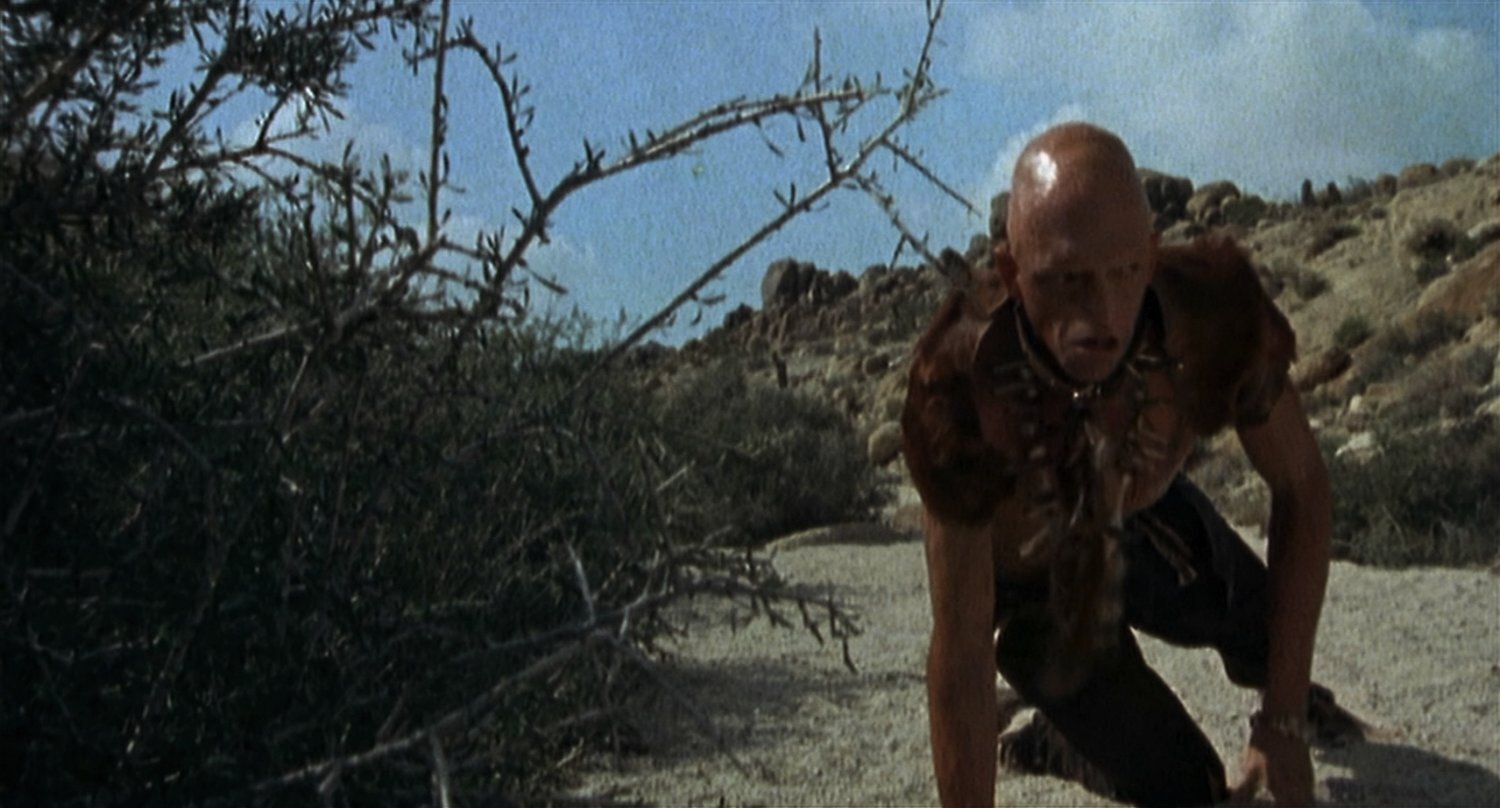Halloween Horror: The Hills Have Eyes (1977)
No matter the quality of Wes Craven’s actual filmmaking, the director, who died in 2015, had a talent for creating horror icons. In 1984, he redefined the slasher movie with A Nightmare on Elm Street, weaponizing dreamscapes and infusing the movie monster with humour in the form of Freddy Kreuger who preys on teenagers in their dreams. Next came Scream in 1996, which shepherded horror through a phase of meta-humour and redefined slashers yet again by undermining the genre’s hackneyed conventions even as it exploited them. But before either of these revolutionary takes on horror, Wes Craven played into the hillbilly horror of the 1970s to create another icon with The Hills Have Eyes, a low-rent B-movie with grimy atmosphere, nasty deaths, and a simmering subtext of class rage.
While not nearly as momentous as his two other films, The Hills Have Eyes is nevertheless an effective horror picture and a harbinger of what was to come for Craven’s career. The film follows a family, the Carters, who gets stranded on a remote stretch of highway in the Mojave Desert. As night falls, a family of cannibals living in the hillside descends on the Carters and the Carters have to resort to monstrous violence in order to defend themselves against the cannibalistic mutants.
Following the blueprint of Tobe Hooper’s horror masterpiece, The Texas Chain Saw Massacre, The Hills Have Eyes strands ordinary, middle-class Americans in a nightmarish world where they’re prey to disgusting humans who literally feast on their flesh. Like Hooper’s film, Craven’s work preys on basic human fears of getting lost in the wild and encountering savagery in human form. Likewise, it weaponizes cannibalism—the cannibal family threaten to eat the Carters’ baby later in the film, providing the key motivation for the protagonists—even if it never uses the characters as allegorical stand-ins for meat, as The Texas Chain Saw Massacre does.
Even more than Hooper’s classic, Craven’s film is a work of exploitation, playing on cheap thrills involving rape, murder, and mutilation. Several moments cross the boundaries of good taste, but there’s no denying the effectiveness of the approach. The grainy 16mm cinematography transforms the dark expanses of the Mojave Desert into a field of shadows, with every rock or bush potentially hiding death and monstrosity. Craven takes a cue from Spielberg and keeps the cannibals out of the frame for most of the first half of the film. They’re only seen in fleeting glimpses or as shadows at the edge of the frame, heightening the sense that they are pervasive and inescapable in the desert.
However, when he does finally introduce them, Craven gives each member of the cannibal family a distinct personality that plays into conventions of the lower class and feeds the reactionary fears of the 1970s. As he does with Freddy Kreuger in A Nightmare on Elm Street, Craven is not content to keep his monsters as simple avatars of death; they are both killers and distinct people with their own flaws and idiosyncrasies. This approach ultimately dulls some of the terror, as the more we learn about Papa Jupiter (James Whitworth) or Pluto (Michael Berryman), for instance, the less nightmarish they become. But the presence of personality quirks and character drama relating to the cannibals adds an unnerving edge to their presentation, pointing out that they share many of the same qualities as the viewer. It creates a discomfiting link between monster and viewer, playing into the uncanny, which works to refuse the easy out of classifying the villains as “other.” This plays into the film’s satirical edge and gives it some thematic heft beyond grindhouse thrills.
While Craven’s approach seemingly plays into reactionary fears of the lower class and social outcasts, it does so to a parodic degree, one that highlights the absurdity of such fears of the poor and disenfranchised in the first place. Furthermore, like many exploitation films, The Hills Have Eyes unmasks the brutality lurking within the bourgeois characters at its centre. As the cannibals descend on the Carter family, the Carters have to resort to brutal violence to defend themselves and rescue their baby. The distinction between the cannibals and the Carters falls away as both are clearly working to survive in the harsh conditions of the desert. As well, as the remarkable final frame that fades to red shows, the struggle awakens the savagery within the Carters, as their capacity for violence outstrips the mere fight to survive; they too learn to find pleasure in killing.
Thus, despite the film’s ugliness, ghastly violence, and outlandish characters, The Hills Have Eyes has more on its mind than cheap thrills. It works to indict the very audience that wants to gawk and cringe at its depictions of lower class monsters. Thus, this subversive approach makes it of a piece with Craven’s subsequent horror landmarks, A Nightmare on Elm Street and Scream. It is a rougher work of artistry than either of these films, but its intelligent approach and impact on the horror genre is no less assured.
7 out of 10
The Hills Have Eyes (1977, USA)
Written and directed by Wes Craven; starring Russ Grieve, Virginia Vincent, Susan Lanier, Robert Houston, Dee Wallace, Martin Speer, James Whitworth, Cordy Clark, Lance Gordon, Michael Berryman, Peter Locke, Janus Blythe, John Steadman.
